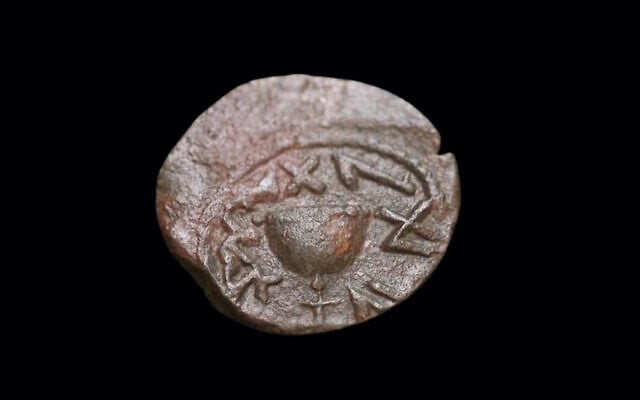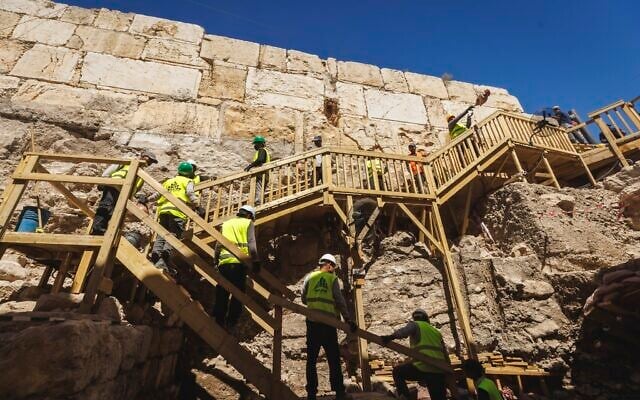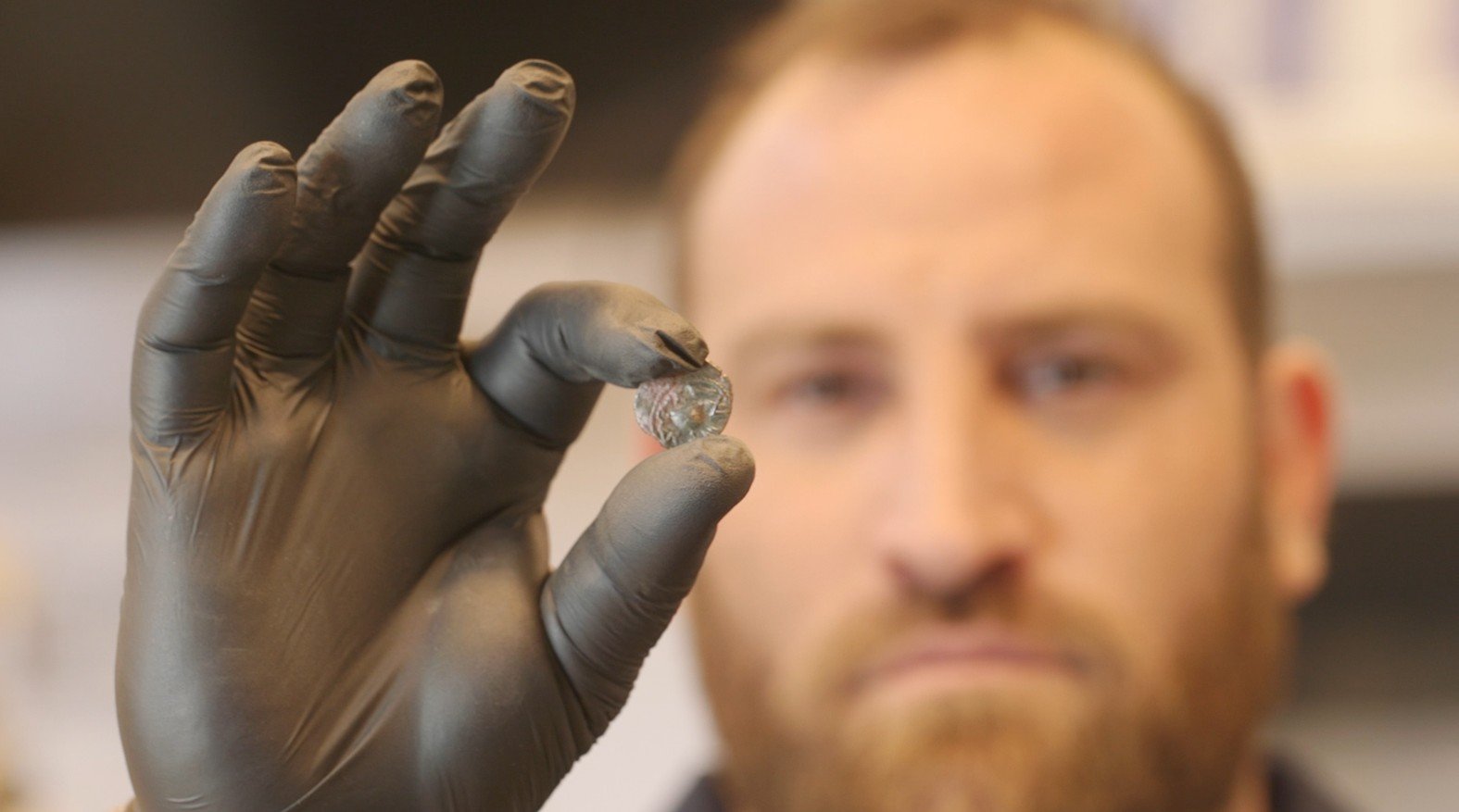A bronze coin minted in the fourth year of the Jewish Great Revolt against the Romans has been uncovered near the Temple Mount in Jerusalem, the Israel Antiquities Authority announced Thursday. The small artifact offers a glimpse into the final, dramatic months that preceded the destruction of the Temple in 70 CE, when the rebels already sensed their downfall was imminent.
The coin was found earlier this month during excavations in the Jerusalem Archaeological Garden – Davidson Center, conducted by the IAA in collaboration with the City of David and Jewish Quarter Reconstruction and Development Company.
The obverse of the coin features a goblet alongside the inscription “For the Redemption of Zion.” On the reverse appear a lulav and two etrogim (palm fronds and citrons used ceremonially on the festival of Sukkot), accompanied by the words “Year Four.”
“What’s unique about the coins minted in that final year is the shift in language,” Yanniv David Levy, a researcher and curator in the IAA Coin Department, told The Times of Israel over the phone.
“In earlier years, the inscription read ‘For the Freedom of Zion,’” he explained. “This change suggests a shift in the atmosphere in Jerusalem. Although the Romans had not yet taken the city, it’s likely that people already sensed the end was near.”
Get The Times of Israel’s Daily Edition
by email and never miss our top stories
By signing up, you agree to the terms
According to Levy, having realized that freedom was no longer within reach, the rebels turned their hopes toward divine intervention.

A bronze coin minted in the fourth year of the Jewish Great Revolt against the Romans (69-70 CE) was found during excavations in the Jerusalem Archaeological Garden – Davidson Center in July 2025. (Emil Aladjem/Israel Antiquities Authority)
“Freedom is something people can strive for through their own human actions,” he said. “But a plea for redemption suggests they were no longer relying on themselves — it was a cry for divine intervention.”
The inscription isn’t the only notable change found on coins minted during the fourth year of the revolt — the period between the Hebrew month of Nissan (March–April) 69 CE and Adar (February–March) 70 CE.
“The bronze coins produced at that time were noticeably larger than those from earlier years,” Levy said. “We don’t have a definitive explanation for this change, but it might have been a way for Shimon Bar Giora, who headed the Revolt in its final phase, to assert his leadership.”

Archaeological excavations in the Jerusalem Archaeological Garden – Davidson Center in a picture disseminated in July 2025. (Eliyahu Yanai/City of David)
Levy emphasized that in those days, the significance of minting coins extended far beyond their economic function.
“We shouldn’t think of coins just as money, but as a form of mass communication — like a newspaper or a social media feed,” he said. “To sustain a rebellion, the first step is to convey your message, both to your own people and to your enemy. These coins declared the cause of the Revolt and projected an image of strength.”
He noted that the last time coins had been minted by a Jewish sovereign in the Land of Israel was during the Hasmonean dynasty, about a century earlier.
Minting their own currency also had practical implications.
“By producing coins, the rebels could operate an economy independent of Roman currency in the areas they controlled,” Levy said.
He said it’s likely the coin was minted on the Temple Mount or in its immediate vicinity.
“Only some 400 of these coins have been found across Israel, which for bronze coins is quite a small number,” Levy said. “Most of the coins were found in Jerusalem, but some have also been unearthed in Masada, which testify to another part of the story, that of the refugees who fled the city after it was destroyed.”
Levy discovered the Year Four coin while surveying the excavation site with a metal detector.
“I found it about two weeks ago,” he said. “It was covered in dirt, and only after cleaning it in the lab were we able to identify what it really was.”
“Uncovering a coin like this right next to the Temple Mount, and so close to Tisha B’Av, the day we mourn the destruction of the Temple, was incredibly moving,” he added.
Is The Times of Israel important to you?
If so, we have a request.
Every day, even during war, our journalists keep you abreast of the most important developments that merit your attention. Millions of people rely on ToI for fast, fair and free coverage of Israel and the Jewish world.
We care about Israel – and we know you do too. So today, we have an ask: show your appreciation for our work by joining The Times of Israel Community, an exclusive group for readers like you who appreciate and financially support our work.
Already a member? Sign in to stop seeing this
You appreciate our journalism

You clearly find our careful reporting valuable, in a time when facts are often distorted and news coverage often lacks context.
Your support is essential to continue our work. We want to continue delivering the professional journalism you value, even as the demands on our newsroom have grown dramatically since October 7.
So today, please consider joining our reader support group, The Times of Israel Community. For as little as $6 a month you’ll become our partners while enjoying The Times of Israel AD-FREE, as well as accessing exclusive content available only to Times of Israel Community members.
Thank you,
David Horovitz, Founding Editor of The Times of Israel
Already a member? Sign in to stop seeing this
